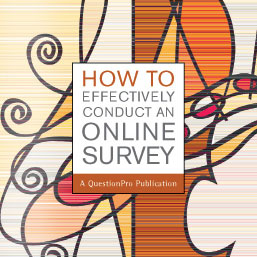How CSIRO hears Local Voices without network connections - QuestionPro Case Study
Overview
In 2017, Rio Tinto engaged CSIRO for a three-year project to apply the CSIRO approach with communities in the Pilbara region. The project is called Local Voices. Australia's national science research agency switched to QuestionPro Offline Surveys to save time and effort on this project.
Target
With Local Voices, CSIRO was giving communities, across Australia and around the world, the opportunity to confidentially express their views and experiences with industry or organisations in their local area. The independent, valuable insights generated by the program help companies and communities build stronger relationships. Their objective was simple - find a survey solution that would work remotely without a network connection, and later sync when online to provide insights as required.
Challenge
Conducting surveys in remote locations posed some big challenges for CSIRO, as they had expected to collect the survey data manually on paper and then have to transcribe this data. They were also concerned that some of the online survey solutions would need an active and reliable internet connection, which was difficult in the locations they were covering. In addition, they also believed that given the lower literacy levels in the communities they had to cover, an in-person solution was needed. The survey solution they needed had to address all of these concerns if they were to use an online solution.
Outcomes
Using the Mobile App on iPads in offline mode is the reason the team have been able to scale up their operations to include more data collectors and reduce errors in data transcription, as there is no transcription needed. They have also successfully expanded to other countries where this project needed to be implemented.
Project Steps
- CSIRO sets up a single corporate license to use the mobile app
- Multiple tablets were needed to collect data simultaneously
- Upgraded the license to Team edition to get better device control and scale
QuestionPro addresses every challenge with the mobile app for iOS and Android with offline capability
As per feedback from our contact, Naomi Boughen, "We have been using QuestionPro Offline Surveys since the beginning and never faced a single issue with the offline app either from a sync perspective or a data security perspective." The Voconiq team has been using the service for over 3 years now and have since expanded the team to collect more data from a larger response region. This was scaled effortlessly at both the customer end - adding more users and devices, and on the server end - to be able to support the increase in the amount of data being collected and stored on the client account.
Download PDF to read more
Survey Software Easy to use and accessible for everyone. Design, send and analyze online surveys.
Research Suite A suite of enterprise-grade research tools for market research professionals.
Customer Experience Experiences change the world. Deliver the best with our CX management software.
Employee Experience Create the best employee experience and act on real-time data from end to end.







